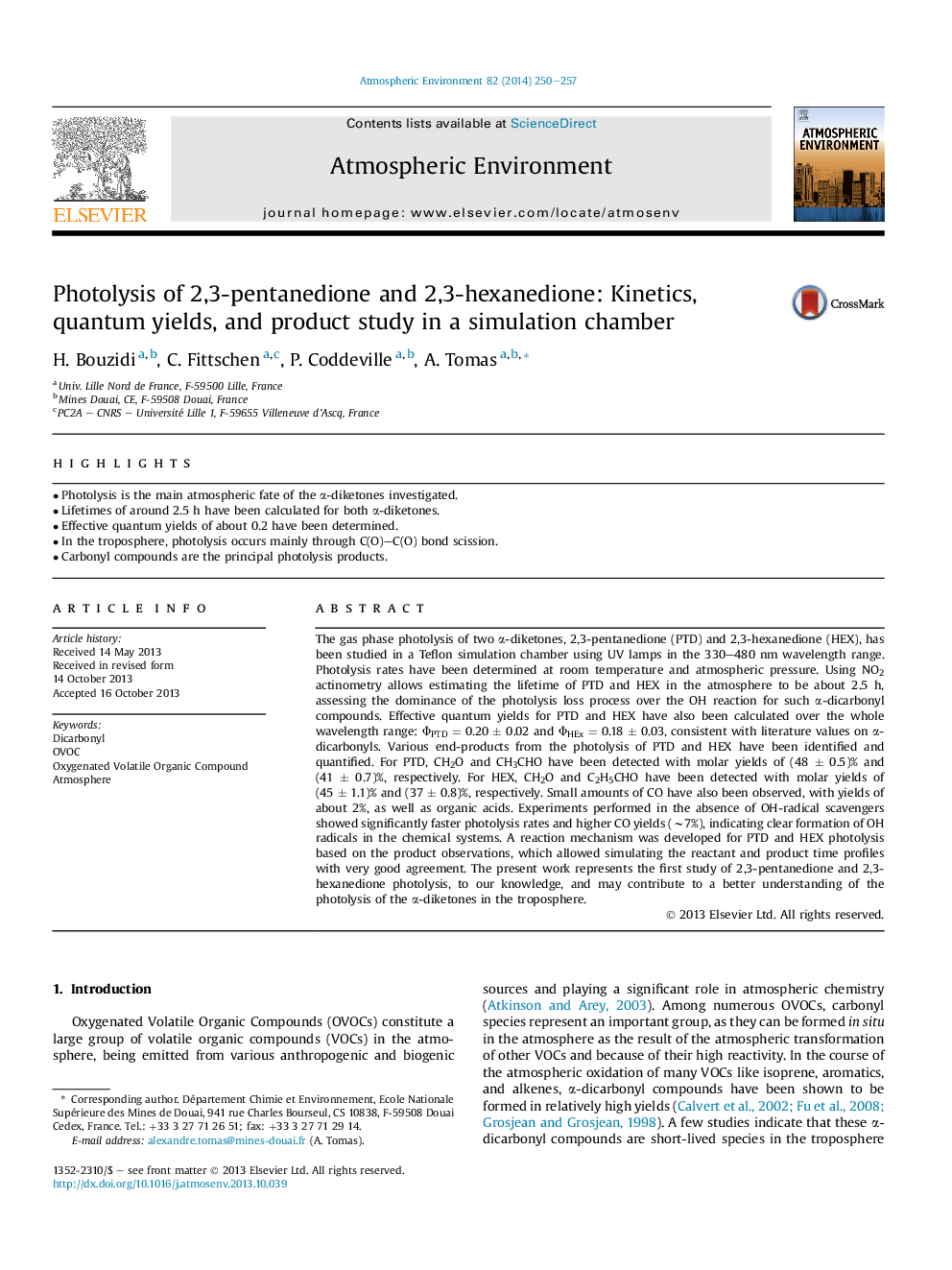| Article ID | Journal | Published Year | Pages | File Type |
|---|---|---|---|---|
| 6340069 | Atmospheric Environment | 2014 | 8 Pages |
Abstract
The gas phase photolysis of two α-diketones, 2,3-pentanedione (PTD) and 2,3-hexanedione (HEX), has been studied in a Teflon simulation chamber using UV lamps in the 330-480 nm wavelength range. Photolysis rates have been determined at room temperature and atmospheric pressure. Using NO2 actinometry allows estimating the lifetime of PTD and HEX in the atmosphere to be about 2.5 h, assessing the dominance of the photolysis loss process over the OH reaction for such α-dicarbonyl compounds. Effective quantum yields for PTD and HEX have also been calculated over the whole wavelength range: ΦPTD = 0.20 ± 0.02 and ΦHEx = 0.18 ± 0.03, consistent with literature values on α-dicarbonyls. Various end-products from the photolysis of PTD and HEX have been identified and quantified. For PTD, CH2O and CH3CHO have been detected with molar yields of (48 ± 0.5)% and (41 ± 0.7)%, respectively. For HEX, CH2O and C2H5CHO have been detected with molar yields of (45 ± 1.1)% and (37 ± 0.8)%, respectively. Small amounts of CO have also been observed, with yields of about 2%, as well as organic acids. Experiments performed in the absence of OH-radical scavengers showed significantly faster photolysis rates and higher CO yields (â¼7%), indicating clear formation of OH radicals in the chemical systems. A reaction mechanism was developed for PTD and HEX photolysis based on the product observations, which allowed simulating the reactant and product time profiles with very good agreement. The present work represents the first study of 2,3-pentanedione and 2,3-hexanedione photolysis, to our knowledge, and may contribute to a better understanding of the photolysis of the α-diketones in the troposphere.
Keywords
Related Topics
Physical Sciences and Engineering
Earth and Planetary Sciences
Atmospheric Science
Authors
H. Bouzidi, C. Fittschen, P. Coddeville, A. Tomas,
